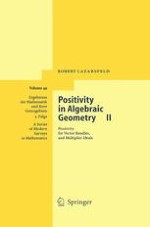This two volume work on "Positivity in Algebraic Geometry" contains a contemporary account of a body of work in complex algebraic geometry loosely centered around the theme of positivity. Topics in Volume I include ample line bundles and linear series on a projective variety, the classical theorems of Lefschetz and Bertini and their modern outgrowths, vanishing theorems, and local positivity. Volume II begins with a survey of positivity for vector bundles, and moves on to a systematic development of the theory of multiplier ideals and their applications. A good deal of this material has not previously appeared in book form, and substantial parts are worked out here in detail for the first time. At least a third of the book is devoted to concrete examples, applications, and pointers to further developments.
Whereas Volume I is more elementary, the present Volume II is more at the research level and somewhat more specialized. Both volumes are also available as hardcover edition as Vols. 48 and 49 in the series "Ergebnisse der Mathematik und ihrer Grenzgebiete".
